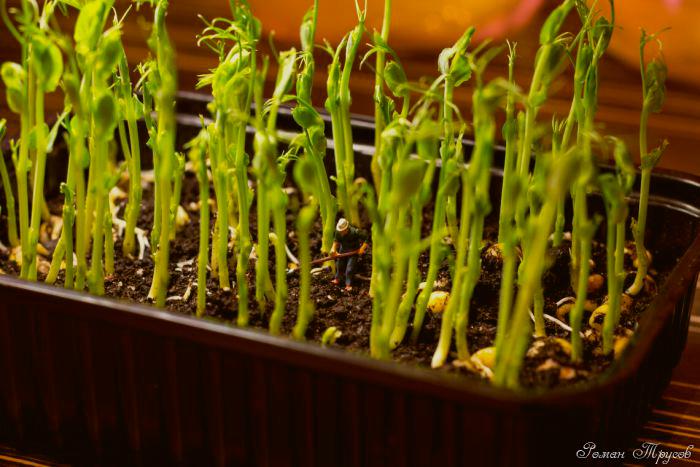Micro-greenery is increasingly appearing on windowsills and has become a real superfood. The shock amount of minerals, vitamins PP, E, C and ease of cultivation are the key to the popularity of home micro-greenery. Its second name is microgreen. On the Internet, you can find dozens of ways to germinate seeds in the ground, a special substrate, organic cotton wool, burlap and even on toilet paper. But is the process of growing juicy and green shoots so elementary?
In fact, amateur gardeners are waiting for some difficulties when growing micro-greenery at home:
1. Midges. There is little pleasant in the appearance of small flying insects. When growing microgreens, many make a serious mistake – they excessively moisten the soil, especially in winter. A cold window sill with the absence of normal air circulation and abundant watering of micro-greenery are favorable conditions for the reproduction of midges. Insect larvae actively develop in the damp cool ground, feeding on the roots of seedlings. To avoid troubles in the form of midges, moderate watering and daily ventilation of seedlings are important when growing microgreens. The content of trays with greens in the film is unacceptable.
The appearance of midges is not always due to improper care of microgrin. Sometimes the purchased soil causes the reproduction of insects. There is only one way out – the plants are cleaned, the trays are disinfected, and the soil is calcined at high temperatures.
2. The smell. The reason for the appearance of an unpleasant "raw" smell is excessive watering and, as a result, mold. Trays with micro-greenery are better placed on the illuminated areas of the room, preventing overflow and stagnation of moisture.
3. Uneven growth when growing micro-greenery at home. The sprouts are planted in one day and in a uniform layer, but the seedlings germinate better at the edges than in the middle? The reason is short-term and poor watering. Moisture does not reach the center, moistening only the root mass. Another problem is the deflection of the tray to the center. As a result, the plants in the middle "choke" and lag behind in growth.
4. Time consumption. Usually, the first crop can be cut within 2 weeks after sowing. But depending on the type of seedlings, there are several levels of complexity. For example, cilantro, coriander or red basil should be germinated for 3-4 days, and the total period of cultivation is from 14 to 28 days. Much more than arugula, radish, daikon and many other crops. In the expenditure of time, it is worth including daily spraying of green shoots.
5. Place and area. There are no clear rules here. You can grow microgreens in any containers and containers, focusing on the dimensions of the living space. The only problem of the place may be growing seedlings in large quantities in boxes. Some amateur gardeners even create "phytostenes". Otherwise, the area of the window sill or a place on a glazed balcony will be enough for the harvest.
6. Risk of damage. So that pleasant chores are not overshadowed by the death of microgreens, it is important to choose fresh seeds and a high-quality substrate for growing seedlings. Micro-greenery is unpretentious, but the risk of spoilage increases with increased soil moisture in the cold season and insufficient air circulation.
With proper and uncomplicated care of home micro-greenery, you can avoid many difficulties and get a harvest in a couple of weeks.
